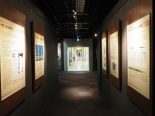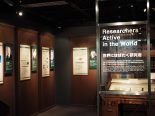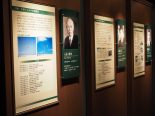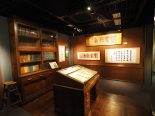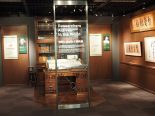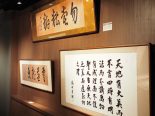Researchers Active in the World
世界にはばたく研究者(Researchers Active in the World)
A physics classroom where Hideki Yukawa, who won the Nobel Prize in Physics, developed the idea of the Meson theory. This exhibit introduces the liberated research environment of the School of Science, which was known to be the core of Japanese science at the time, and the School’s various researchers.
Hideki Yukawa and the Nobel Prize
In 1935, Hideki Yukawa (27 years old at the time), who was a lecturer in the Laboratory of Physics at Faculty of Science, Osaka Imperial University, presented a thesis called “On the Interaction of Elementary Particles, I” (the first thesis on mesons), which proposed the existence of a then-unknown particle called a “meson”: the carrier of a binding force (nuclear force) between protons and neutrons that comprise a nucleus. This theory was proved through experimentation in 1947, and Yukawa received the Nobel Prize for Physics “for his prediction of the existence of mesons on the basis of theoretical work on nuclear forces.” Yukawa’s innovative ideas were bred in Osaka University’s free and open-minded learning environment, leading to Japan’s achievement of its first Nobel Prize.

